Battlefield 2042 is just around the corner now, but it seems EA and DICE has been listening to feedback from the recent alphas and, importantly, the open beta that took place a few weeks ago.
Rather than try and rewrite the blog post where EA and DICE has revealed the changes, lets just bring you word straight from the developer about what changes will be happening based on beta feedback.
Here’s the full change list and what DICE is doing about feedback, but first here’s the final five specialists, which you can see in the trailer below:
What we learned in the Open Beta
Over the past few weeks since the Beta, we’ve shared some limited insight into some of the changes that are coming in time for launch, relative to the experience you had playing Conquest, on Orbital:
- Increased the number of Tanks that you’ll experience on Orbital. It’s up from 4, to 8 on PC, Xbox Series X|S, and PlayStation 5.
- Made changes to movement, adding strafe input to sliding, adding the ability to vault on moving objects, and toning down jump spamming.
- A nearby Grenade Indicator has been added.
- Entry and Exit animations are now shorter, with some being removed entirely.
- Elevators have been fixed so that you see less funky behaviours with doors.
But there’s much more beyond that, and we want to give you insight on the opportunities an Open Beta presents us when we invite the world to come and play an early look at our game.
- Firstly, we can test how our technical systems behave in the wild, bringing forward with us the learnings we had from the Technical Playtest in August, to ensure that the solutions we developed were successfully applied in the real world.
- Secondly, we get to compare the behaviors of how we see things behaving internally, with how they behave in the hands of you, the players.
- Finally, an Open Beta on this scale provides us with the opportunity to hear directly from you on how the game feels. There’s plenty of good discussion below covering some of our thoughts on the feedback that we’ve read, and seen shared and discussed across various Battlefield Communities. What we all appreciated seeing most was just how much joy you were having living your best sandbox life. We heard lots of positives about the gunplay, the fidelity, and the welcome return to our modern setting. We also heard plenty of constructive feedback around Performance, Team and Squad play, and the User Interface.
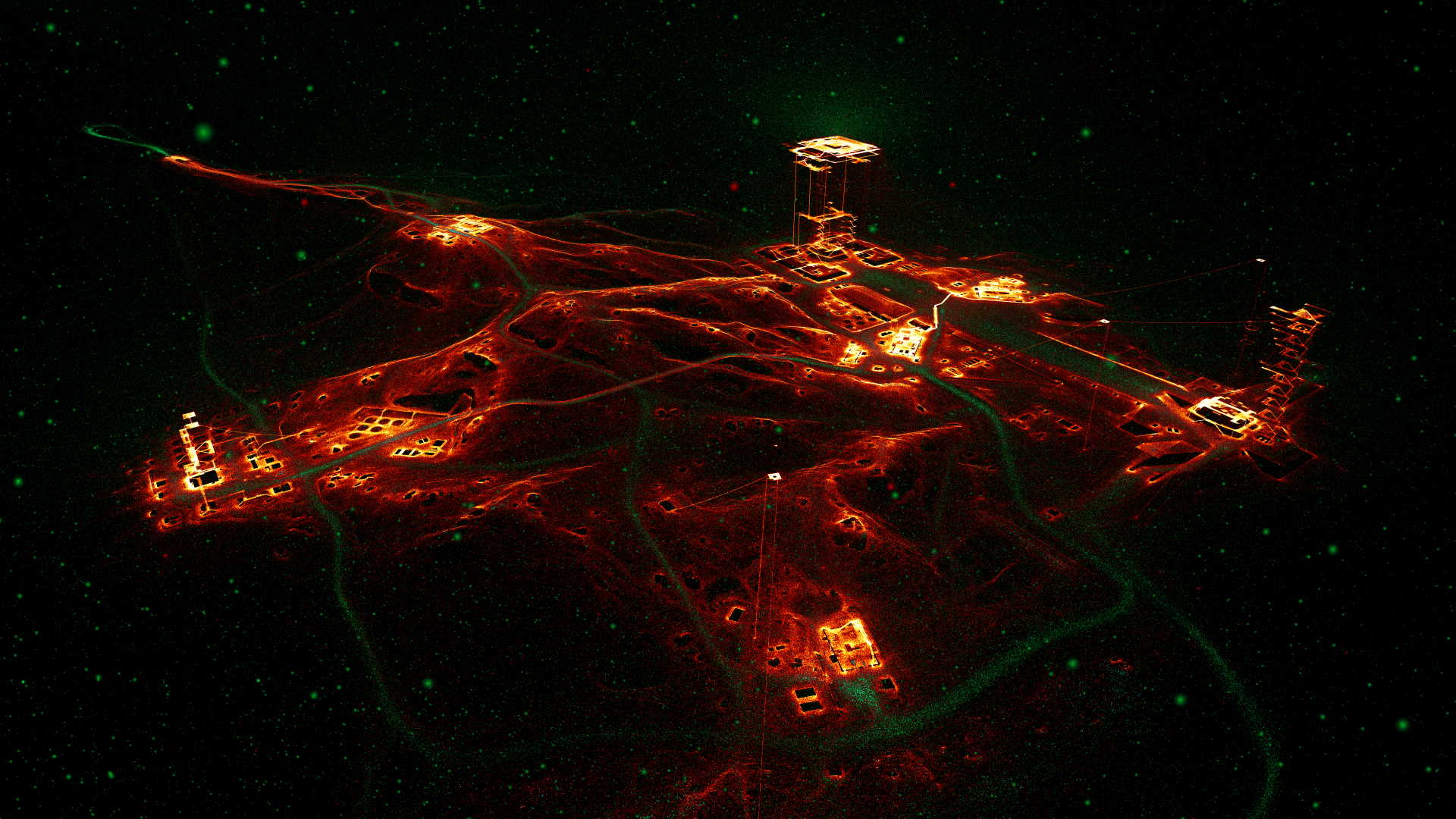
Performance
We’ve previously talked with you about the age of our Open Beta build, but haven’t talked with you about why it is that you experience something older compared to what we’re playing, testing, and polishing every day across our studios.
In order to ensure that we can have an Open Beta, we do something called Branching, where we identify our most stable build, and split it off from our active development branches that receive daily check-ins, new content additions, and bug fixes. This took place back in August, where we were in the process of compiling what we have today, internally, as the complete package of Battlefield 2042.
Branching allows us to strip out all of the unnecessary systems, content, and mechanics that are still under various forms of testing, and polish up what you sometimes hear referred to as a Vertical Slice of the game. We work hard to optimise it, stamp out critical bugs, and drive for maximum compatibility and performance on known hardware. By stripping out other content and systems, we remove potential conflicts that keep things running in the best possible manner.
We knew that the Open Beta build would therefore not showcase where we’re at today with polish and how the game plays, not benefiting from all the additional work that’s been done on the game since we branched in August.
In addition to what you’ve seen today from our full line up of Specialists, and many of the updates that you can read about and see here, expect more Battlefield 2042 updates over the next few weeks that let you get a glimpse on the great progress that the teams have made.
Servers
We gained a mountain of valuable data about the performance of our servers, and the processes we use to keep them successfully scaled, right across the experience. Through the Open Beta, we sustained multiple pingsites, in central locations all over the world, and took some important learnings from that.
- Bot heavy servers were too prevalent across those first few hours for many players. Too many of you were being dropped into games that weren’t being successfully backfilled, and left you fighting against Bots. Our Bots are designed as a good way for new players to learn how to play Battlefield, and to provide new options for veterans of the franchise to take new players under their wing and show them how to PTFO. Bots are not designed as a replacement for other players. Throughout the Open Beta, we were able to dedicate a great deal of time into looking at why the servers were sending certain groups of players into predominantly Bot populated matches. Our teams were then able to make real time changes to the behaviours of Matchmaking to ensure that servers were being stood up with heavy majority human players, and that appropriate backfilling was happening where we expected it too.
- We were also able to monitor the behaviour of Matchmaking and study why it is that players were sometimes being sent to servers outside of their region. With full appreciation that some players didn’t have the optimal experience, we want to thank them for persisting as it allowed our teams to breadcrumb trail the way back through our systems to understand why they were being sent out of their region, and experiencing higher pings than expected. We’ve ironed out a great deal of those creases in time for launch, and will be as agile as we were during the Open Beta in helping address anything new in real time during launch of the game.
User Interface (UI)
Stepping aside from our review of how the technology of our game performed, let’s get into the experience side of the Open Beta, and start talking about the systems that you were interacting with.
Our User Interface in the Open Beta wasn’t fully representative of the final experience. It was missing some essential components, some of which we disabled to remove debilitating (and now resolved) bugs, and some of which we chose to continue to focus work on for launch from when we branched in August.
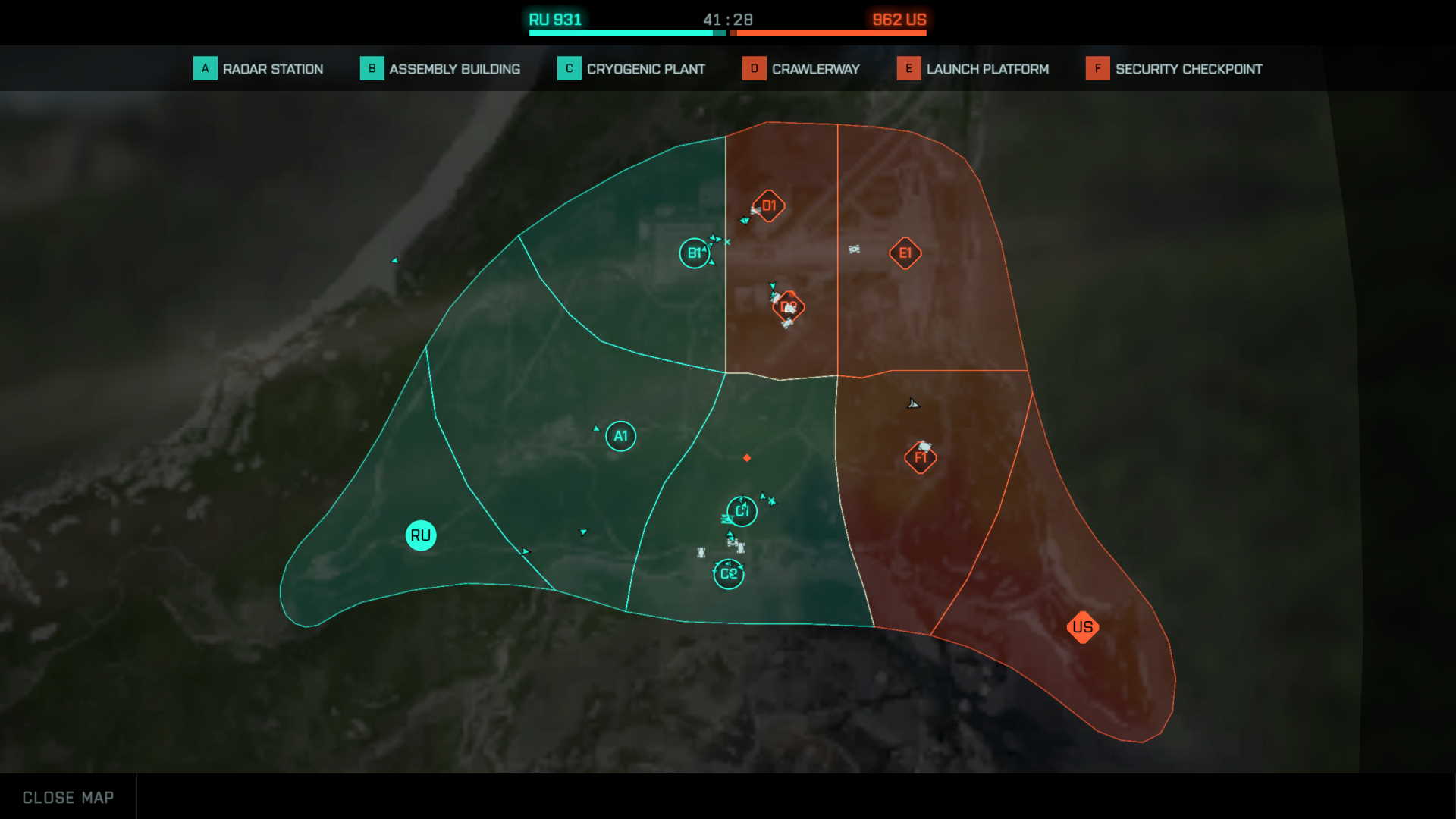
Big Map as we refer to it internally, was disabled. Some of you spotted it in the Key Bindings, and many of you simply expected it based on past behaviours in Battlefield games. We have it in our builds today, and you can see it in action below.
You’ll be able to pull this up at any time during live gameplay, by pressing the View/Touchpad button on Console, or M on PC. It provides an immediate overview of where the battles are taking place, where your squad mates are fighting, and the live breakdown of how the flags are flying inside of each sector. We’ll keep you updated on when to expect this in the game, there’s a chance it makes it into the start of the Early Access start for 2042, and there’s an equal chance that we hold it back to make sure its inclusion isn’t disruptive to the performance of the game.
But what use is Big Map, if you’re without the ability to then help communicate with your squads on how you intend to react to the battle?
Commorose was also absent from the Open Beta, but is very much present in our builds today. This is a staple of in-game communication for Battlefield games, the ability for you to hold a single button, and use quick actions to give an indication of where you’re at, and what you need.
We want to ensure that you’re best equipped with the right tools to communicate with your Squad. As a further example with this, we’ve modified the default behaviour of the Compass that appeared whilst aiming down the sights. At launch, you’ll see that this is now always on, so that you have the ability to easily communicate with your squad on nearby dangers and opportunities.
We know that Battlefield plays best when you’re coordinated. In addition to our Ping System, the ability to quick tap an input to give contextual indicators, we have some great tools to hand over to you at launch. Ping wasn’t working as well as we would have liked during the Open Beta, but at launch, you can expect it function more responsively when you’re pinging locations, assets, and enemy soldiers.
Elsewhere in the UI, let’s quickly talk about the Heads Up Display, and the information that’s presented to you during minute to minute gameplay.
We’ve moved the score events, visible on the right side of the screen, into its final state, centrally beneath the crosshair. It provides you with that more traditional kill confirmed dialogue, that affirms who you’ve killed, healed, and helped across the experience, and how it’s helping to show you the rewards you’re getting for doing so.
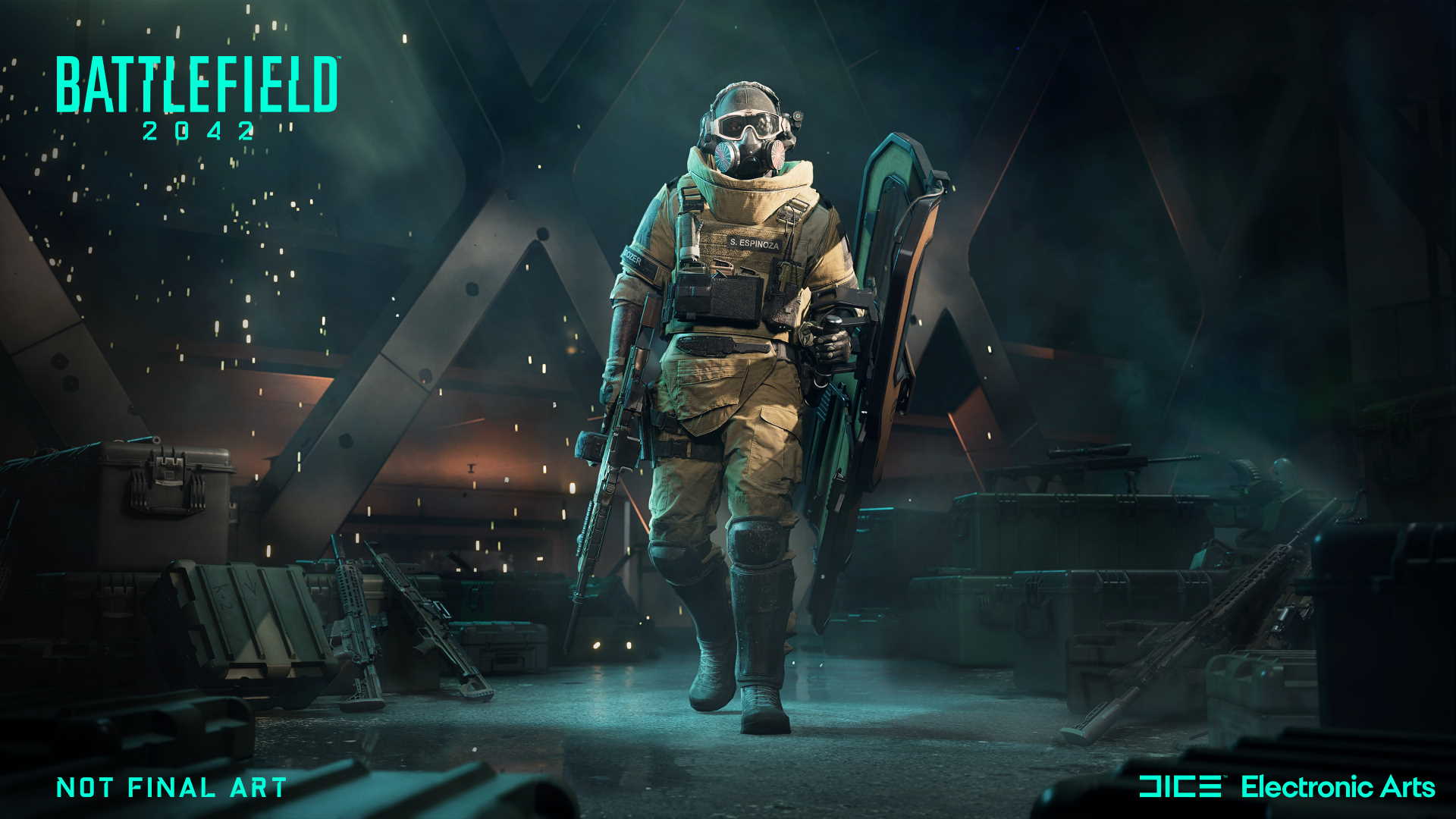
Speaking of which, a note for regular Support-style players. There were multiple scoring events related to Transport Assists, Spawn Support, Resupply, and Heal support that were absent in the Open Beta build. They’re in our full game, we’ll always reward strong teamplay in Battlefield.
Over on the left side of the screen, the kill log is now more readable, with highlighted colors denoting friend or foe killed. There is also more appropriately sized messaging on the status of sectors and flag capture events. These changes help to prevent UI elements from diverting your attention away from the crosshairs, and the battlefield in front of you.
We’ve also performed significant performance passes on our colorblind settings to help support those with color deficiencies that were struggling to have the colors used across our UI properly distinguish themselves, and we’ll continue to take feedback on the application we have around this, and all of our final suite of accessibility options through live service.
A special note to close out this section on UI – let’s talk about the Critical Alert messaging which appears at key moments at the top of the screen. We hear you, it’s too big. We’ve reduced it in size, lowered the frequency of the alerts, and will continue to take feedback on it from you all once you get hands on with the full game.
Team and Squad Play
There are improvements that tie into both Team and Squad Play discussed in the previous section. Both Commorose, the Ping System, and the Big Map all play significant roles in changing up the experience you had with the Open Beta, and will have in the full game.
There are other systems that were either in the Open Beta, but only partially represented, or in the final stages of development in the full game, and so not part of what you got hands on with.
First up, let’s talk loadouts. In the Open Beta, we unlocked more of the sandbox than is experienced when you first start playing the game, as an important way of testing the behavior of certain gadgets in a live environment.
For the first 4-6 hours in the full game, expect to be working with a reduced array of gadgets for your open gadget slot, with your journey through the ranks slowly introducing new ones for your loadouts. That traditional experience of a Battlefield game, where classes fulfill traditional roles is an experience that you graduate out of through the first ten levels. Your Specialists will have the options to choose from a Medical Crate, Ammo Crate, the Recoilless M5 Launcher, and our Repair tool as starting gadgets, and enable the experience of playing in ways that allow players to feel the benefit of playing in more supportive roles.
As you progress beyond those levels, you’ll gain access to more specialised hardware, and Specialists, that help to solve scenarios you can encounter, and we expect you to be regularly interacting with your loadouts on the deploy screen to react to the ever changing nature of Conquest and Breakthrough gameplay.
Loadouts are fully customizable. In the Open Beta, we set you up with four loadouts, that mirror that traditional class structure of Assault, Medic, Support, and Recon. They’ll be there at launch too, for all players as default, but there’s actually a much bigger suite of tools available to you to help speed up the act of switching to different setups, and let you get right back into the action.
From the Collections screen of the main menu, you’ll be able to define what your loadout is, and to provide your loadout with custom names that can allow you to quickly switch between your best setups.
Diving deeper, a frustration we saw shared from the Beta was feedback around inconsistencies you experienced with our plus menu, and the need to reset your best setups on each of your weapons on each round, and in the case of the AK-24, unintentionally on every respawn. We wanted to share this deeper look into the complete behaviour of the plus menu, and to showcase that you have more control over this function than you got hands on with.
There are multiple slots per attachment type that you can assign different items into, drawn from an extensive pool of weapon specific attachments that unlock as you play more with the weapons. Anything assigned into slot 1, those closest to the centre, is your effective spawned setup. When you deploy with the weapon in hand, you’ll always be set up with your preferred attachments. This can be accessed from the Collections Screen on the main menu, and from within the deploy screen during gameplay.
Moving away from loadouts, let’s talk squad composition.
We hear you loudly on this topic. Squad comp matters. You each experienced four of the ten specialists coming to Battlefield 2042 at launch, so we can appreciate that experiencing the full diversity of our gameplay, nor variety of customisation, wasn’t accessible for you during the Open Beta.
In Hazard Zone, we’re keeping things tight and deliberate on squad comp. Specialist selection will be unique, and we’re not running with duplicates inside the squad. In All-Out Warfare, we’re not using the same restrictions; we’ve been learning since Battlefield 1942 that our game just isn’t fun when you can’t play to your strengths, and there’s been lots of iteration done in this area in all of our games across the franchise’s history. In Battlefield 2042, you’ll enjoy the freedom of moving between the Specialists and loadouts that you need to support the Squad, and there are parts of the experience that we have in our builds today that help to reinforce that.
First, there’s our Insertion flow. Your squad mates will be shown your Player Cards, where you’ve got the chance to personalize, and flair it to show off your playstyles. There’s then additional time in pre-round, which was disabled during the Open Beta, to chat and make further changes to your squad comp so that you hit the ground running straight out of the gates.
Better still, we’re celebrating our strongest team players at the end of the round in our full End of Round (EOR) flow. Again, this one didn’t make the cut for Open Beta, but expect that when the round wraps up, we’ll be paying tribute to the best squad players, and recognizing the contributions folks made to capturing objectives, reviving fallen teammates, and keeping ammo stocked up.
To help you achieve this acknowledgement, there are UI elements that help you to know who’s in need of healing, repairs, and resupplies coming to the game for our worldwide launch on November 19. There’s also been changes made to Health Regeneration, slowing down the time it takes for the healing effect to start, and helping to increase the need to work with your Medics. To help support those changes, you’ll find that Maria Falck’s Syrette Pistol has received enhancements and tweaks to improve the feedback you receive when you’re successfully healing an ally, and making it easier to land a syringe on a friendly target by having the Syringes magnetise to friendly targets. We’ve also worked to make revives faster, across the board.
More things we heard from you
We’ve covered a lot today, and there’ll be plenty of room between now and launch to talk more about where things are at, and the finer details of the experience that you’re yet to encounter.
Some closing remarks though on key topics that we saw you talking about during the Open Beta.
We use the term IFF to describe the approaches we take to ensure that you can always, and easily identify between friend and foe. IFF is being improved. In our current builds, we’ve adjusted the behaviour of the systems we use to improve the experience.
- Our IFF lighting is in the process of being further enhanced to enable enemies to more readily stand out on the battlefield.
- We’re also adjusting the tint that applies to enemy soldiers, and made changes to the UI so that when you’re inside of 10m, an icon is now present above the heads of enemy soldiers, provided they wouldn’t be otherwise occluded by any terrain, or map objects.
- Similarly, we’re working to ensure that friendly icons will no longer be occluded through walls within 40m to address instances of our systems failing to represent a player as a friendly team mate before they’ve entered your field of view.
You’ll see some of these changes active when the game goes live in our early access window on November 12th, with more changes taking effect for our worldwide launch on November 19th.
Controller players, we want you to know that we already have improved mapping in our final options suite that will provide you with better overviews of the controls, and options that enable total controller mapping if ever you think we’ve got the default preset wrong.
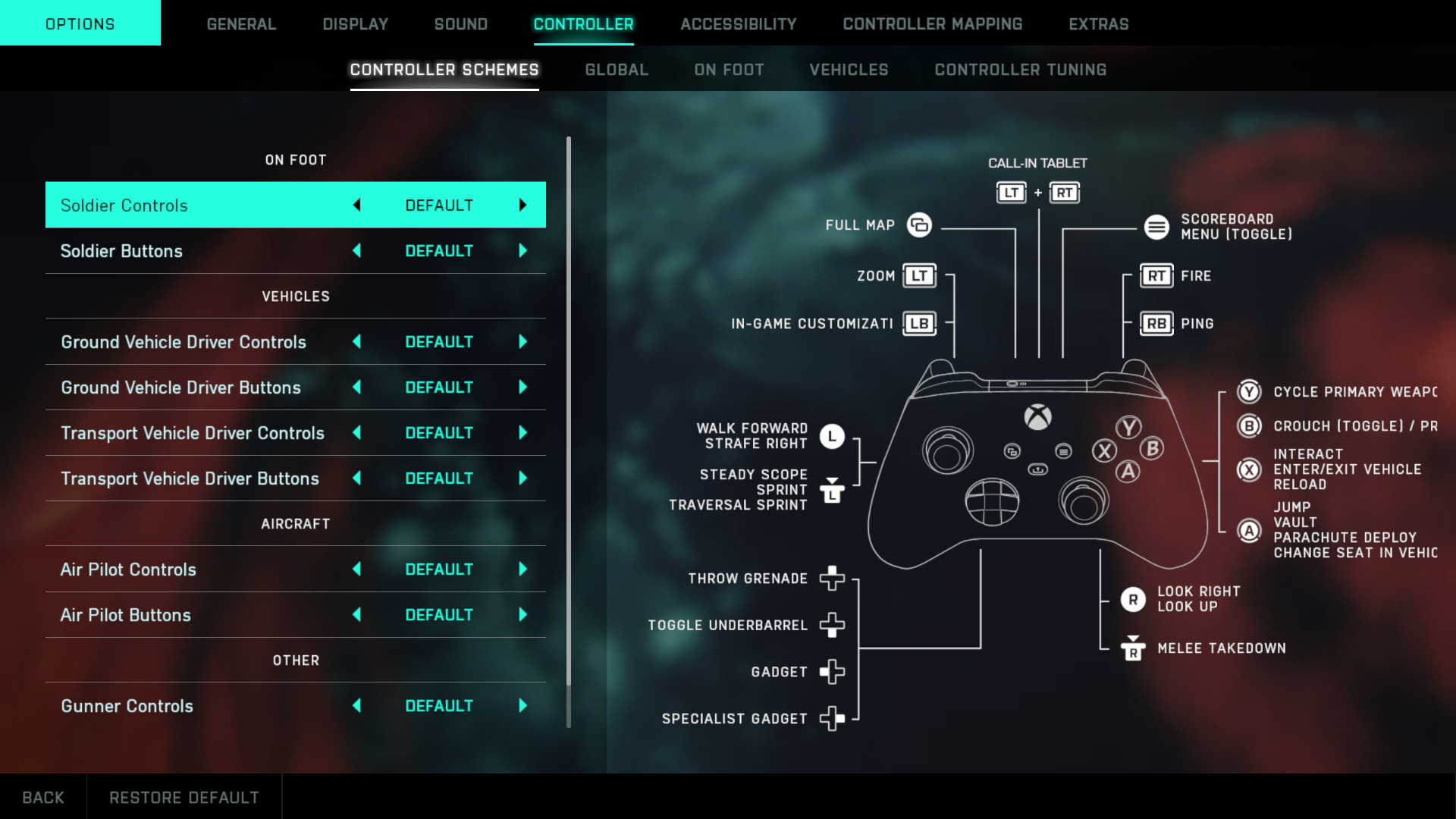
We really appreciated all the nuanced feedback that we got around this topic during the Open Beta, including the specific examples of how managing the Hybrid Scopes on the Legacy Mapping was causing you to crouch each time you changed the setup. Thanks for helping to flag this stuff to us!
We’ve also heard your feedback on Aim Assist strength on controllers. You helped to show us that it was too low, so we’ve worked to improve this experience, making it more familiar to players who played with us in past titles.
Another improvement coming to consoles is the ability for you to engage with Text Chat for the first time. Now that we’re Cross Platform, we know how important it is to sustain accessible options for communication, and we’ve got you covered here.
As we discussed recently in our Commitments to Healthy Play in Battlefield 2042, we’ll be arming you with all the tools you need to help keep this function useful, and usable on the battlefield, including the option to hide the feature outright if you’d rather not see it, or make use of it. We know that many of you prefer to use.
For many of you, we know that you’ll prefer to use VOIP to keep the lines of communication open during gameplay, and a heads up that this is presently set to come in after launch.
Cross Platform invites for squadding up will otherwise be in at launch. This was again absent from the Open Beta, and something we know helps to make sure you’re playing with your best squad, and PTFO’ing right to the last ticket.
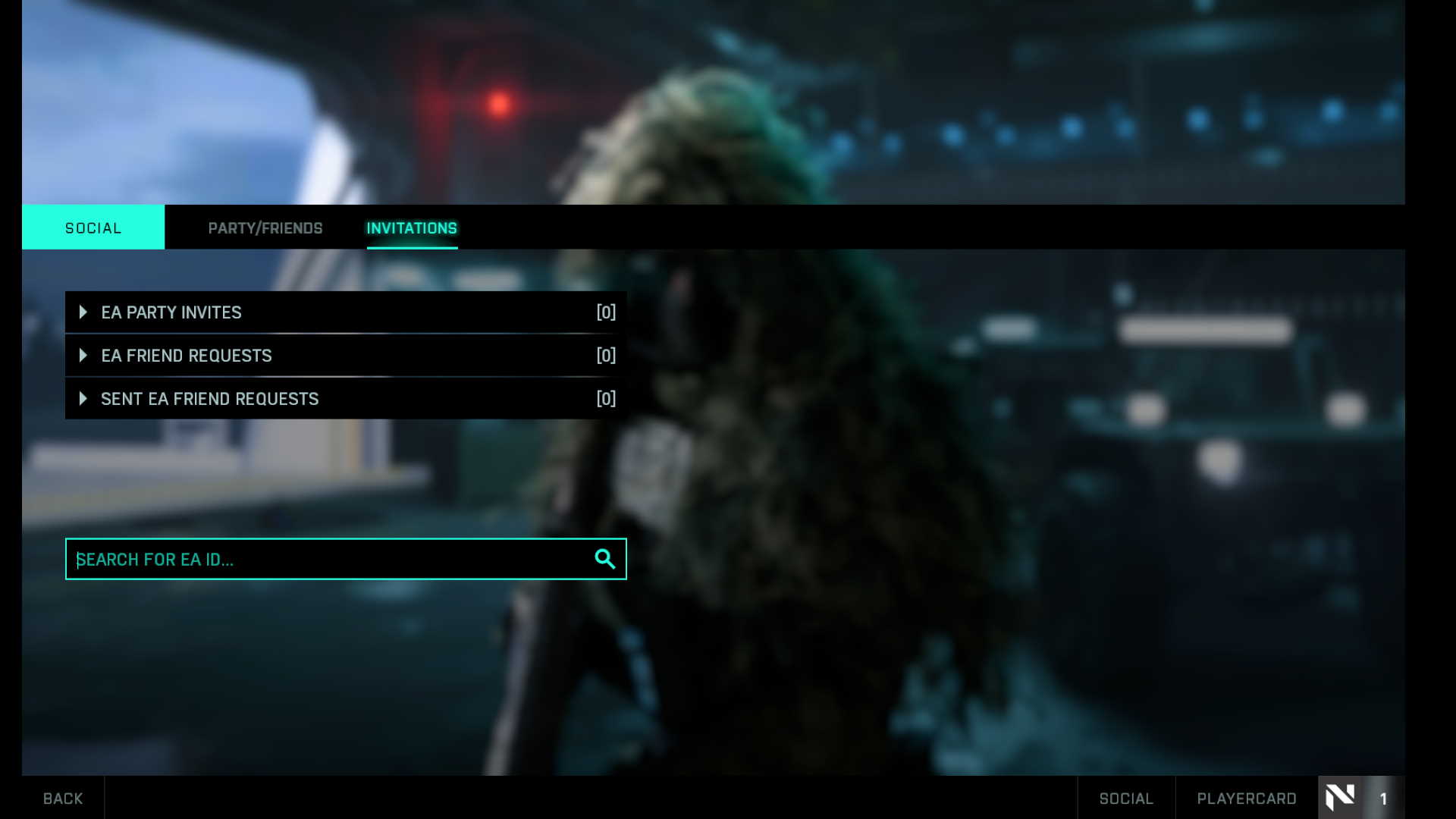
Battlefield 2042 is out on PC, Xbox Series S|X, Xbox One, PS4, and PS5 on November 19th.





